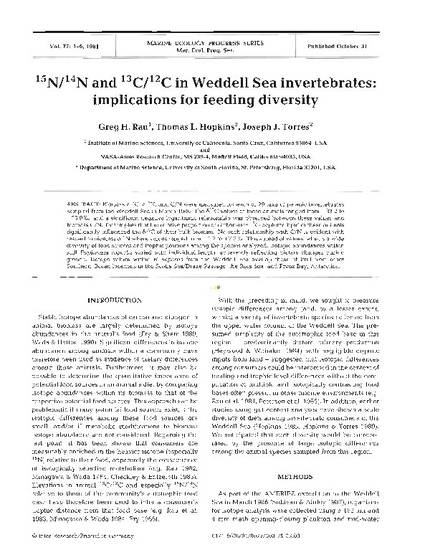
Biomass delta-C-13, delta-N-15, and C/N were measured for each of 29 taxa of pelagic invertebrates sampled from the Weddell Sea in March 1986. The delta-C-13 values of these animals ranged from -33.2 to -23.9 parts per thousand, and a significant negative logarithmic relationship was observed between these values and biomass C/N. This implies that the relative proportion of carbon-rich C-13-depleted lipid in these animals significantly influenced the delta-C-13 of their bulk biomass. No such relationship with C/N is evident with respect to biomass delta-N-15 where values ranged from -1.2 to +7.3 parts per thousand. This spread of values reflects a wide diversity of food sources and trophic positions among the species analyzed. Isotopic abundances within krill Euphausia superba varied with individual length, apparently reflecting dietary changes during growth. Isotope values within E superba from the Weddell Sea overlap those of krill from other Southern Ocean locations in the Scotia Sea/Drake Passage, the Ross Sea, and Prydz Bay, Antarctica,
Marine Ecology Progress Series, v. 77, issue 1, p. 1-6
Copyright © 1991 Inter-Research
Available at: http://works.bepress.com/joseph_torres/5/
